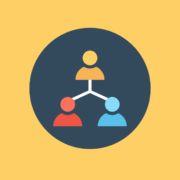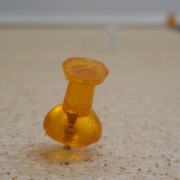Applicant Tracking Fits The Needs Of The Healthcare Industry
The healthcare industry has obviously been through many, many changes in this country. This affects all aspects of healthcare providers – from the services rendered to patients to the other side of the spectrum…such as the benefits of the health care workers themselves (not to mention the benefits of all employees in all industries). That being said, I think we can agree that human resource representatives, especially those working for hospitals, clinics and other providers, have their plates full these days. With limited time and resources available, healthcare organizations stand to gain a lot from automating some standard HR processes such as recruiting and onboarding. For example, with the right applicant tracking software (ATS), they can quickly alleviate some of the headaches of hiring in this chaotic, current landscape.
While the issues detailed below can occur for HR within any industry, they can especially cause BIG problems in hiring for healthcare positions.
Overtime for current staff and using temporary, contingent staff
When there are many positions open, current staff is sometimes forced to work more (which of course costs more!); or, the organization may need to hastily hire temporary staff (which is also expensive in itself). After all, the healthcare industry is not a place where you can just “close down” until a new hire is found or chalk involuntary turnover up to embraced attrition. For example, some positions can be 24 hour shifts that require constant employee attendance. When using an ATS in the healthcare industry, you will be able to make hires more quickly and efficiently when utilizing existing job templates and automated job board posting features; thus, keeping costs down and being more effective with your staffing process.
Never ending paperwork
This headache can apply to an applicant or the hiring manager. However, by integrating an effective hiring software tool into your organization’s recruitment process, job applicants will generally appreciate the ability to access your employment application online so that they may complete it at their own convenience and without rifling through a paper application. An ATS can be configured to allow them to upload files representing any additional documentation you may require such as licenses, test scores and transcripts.
And, hiring managers will be able to use an applicant tracking system to quickly launch and receive approval on new job requisition requests instead of having to wait for multiple layers of people to manually deliver paper forms to one another. In addition, hiring managers can design screening questions that score and/or disqualify applicants who do not meet minimum requirements so that they may reduce the number of applicants they need to review to keep the process moving for all involved.
Higher turnover rates
It can be common in the healthcare realm for organizations to suffer from higher turnover rates. This could be attributable to multiple factors. For example, sometimes when a hospital is understaffed, the extra shifts may cause more employees to disengage, burn out and then leave the organization. Its a vicious cycle and the turnover rate then gets higher and higher. Again, using an applicant tracking system can help reduce the time to fill a position as well as the cost (especially in terms of time) it takes to make effective hires for the positions open.
People are the most valuable resource for not just the healthcare industry, but any industry. However, they are also the biggest piece of the pie when analyzing the operating costs of any organization. Using an applicant tracking system can help to ensure that you find the right fit for your positions in a time-sensitive and cost-effective manner.
To take the hiring process one step further – ExactHire can also assist you with background screening options and employee assessments to make sure the you find the best fit and retain your talent in the long run.
To learn more about ExactHire’s hiring software solutions, please visit our resources section or contact us today.
Image credit: stethoscope by Dr. Farouk (contact)








 15% OFF FULL-SERVICE HIRING • APPLICANT TRACKING SOFTWARE • ONBOARDING SOFTWARE
15% OFF FULL-SERVICE HIRING • APPLICANT TRACKING SOFTWARE • ONBOARDING SOFTWARE